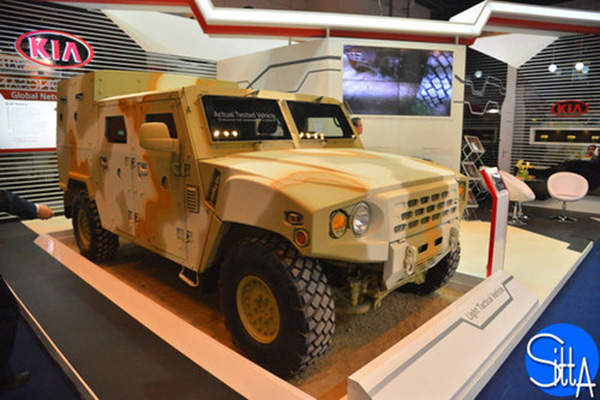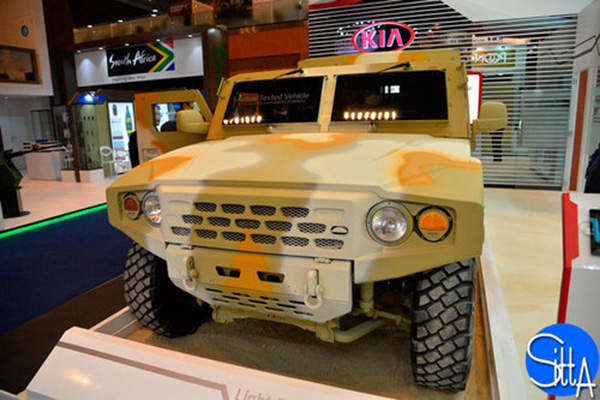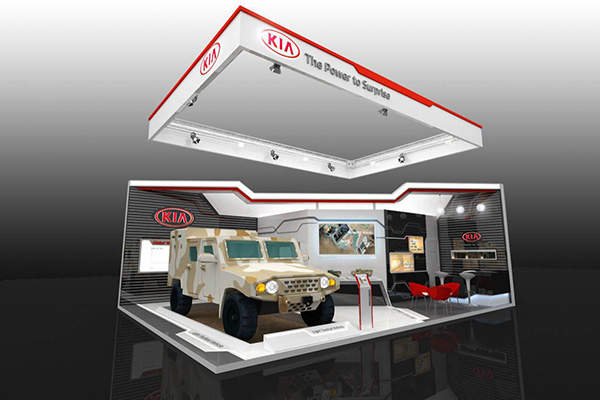
The Kia Light Tactical Vehicle (KLTV) is a third-generation vehicle developed by Kia Motors Corporation, a company based in South Korea. The 4×4 vehicle is offered for South Korean Armed Forces and export customers. The KLTV is also known as KM1.
The KLTV was displayed for the first time at International Defence Exhibition and Conference (IDEX) 2015 held in Abu Dhabi, UAE. Serial production of the vehicle began in 2016.
The versatile vehicle is suitable for a range of missions, including transportation of troops, patrolling, command and control, reconnaissance, and logistics operations.
KLTV design and features
ALTV (Acmat Light Tactical Vehicle) Torpedo from ACMAT is a 4×4 lightweight multi-role vehicle intended for use by armed forces.
The modular base chassis of the Kia light tactical vehicle can be configured into a number of mission variants, including multi-purpose vehicle (MPV), armoured reconnaissance vehicle (ARV), command vehicle, communication equipment vehicle, and shop van. The robust design delivers high-mobility and survivability.
Two wheelbase versions of the vehicle are offered; namely standard and stretched. The standard armoured command version accommodates four personnel, whereas the long wheelbase variant offers enough space to carry up to eight troops and specialised equipment.
The KLTV with standard wheelbase has a gross vehicle weight (GVW) of 5.7t, whereas the stretched variant has a GVW of 7t. A two-piece windscreen made of ballistic glass is fitted to the forward cabin of the vehicle.
The vehicle is also optionally fitted with a winch powered by an on-board battery. Its high-intensity frame allows the winch to haul objects with wire rope or rescue a vehicle in an open field. The on-board air-conditioning system reduces crew fatigue and ensures driver’s visibility by defrosting the windshield when required.
Kia LTV armament and self-protection
The KLTV can be fitted with roof-mounted weaponry such as a machine gun or an automatic grenade launcher. Gun ports on either side of the hull allow the aiming and firing of individual weapons carried by the occupants.
The bullet-resistant body made of composite materials is fitted with metal sheets and bulletproof glass on windows. The vehicle offers protection against small arms fire and artillery shell splinters, while the floor is anticipated to offer protection against blasts.
A matte coating covers the hull and parts of the KLTV to prevent vehicle corrosion, while camouflaging the vehicle from direct and indirect observations by hostile forces.
KLTV engine
The light tactical vehicle is powered by a high-efficiency, high-horsepower turbo diesel engine, which develops a power output of 225hp. The engine is coupled to an eight-speed automatic transmission that prevents shut down.
A direct engine hybrid generator is another additional option for the KLTV. This supplies power to the on-board equipment. All the electrical parts of the vehicle are protected against water.
Mobility of Kia light tactical vehicle
The all-wheel drive capability improves tracking and hauling power, steering capability and stability, as well as off-road driving power. The independent suspension of the vehicle enhances the ride quality, whereas the four-channel, anti-lock braking system (ABS) ensures stability. The high-ground clearance allows the vehicle to overcome vertical obstacles.
A central tire inflation system (CTIS) is fitted to the light tactical vehicle, which regulates the pressure of tyres from within the cabin for smooth operations on hard and soft terrains.
The run-flat tyre inserts allow the vehicle to travel up to 48km at a speed of 48km/h in the event of tyre damage. The vehicle can carry troops and cargo in cross-country and desert conditions with temperatures ranging between 32°C and 43°C.
A depth of up to 76cm can be handled by the vehicle, as can a side slope of 40% and a gradient of 60%. It has a maximum speed of 130km/h and can attain a range of 600km.







